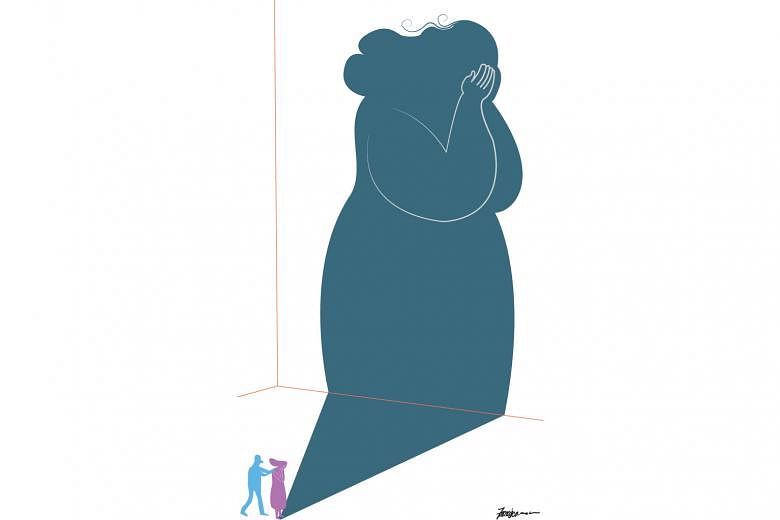Born in 1907 in the New York State governor's mansion, Elizabeth Hughes was the daughter of Charles Evans Hughes, a judge in the US Supreme Court who later became Secretary of State. When she was 11 years old, Elizabeth developed diabetes and her parents sought the help of one of the day's preeminent experts on diabetes.
The mainstay of treatment then was a diet purged of sugar and starch and with just that amount of calories to keep the patient alive. Elizabeth was placed on one such gruelling regime and for the next few years, she subsisted on lean meat, eggs, milk, a few fruits, bran rusks and vegetables boiled repeatedly to leach them of any carbohydrate. Instead of a real birthday cake, she had a hat box covered in pink and white paper with candles on it. (A doctor described one such dieting patient as "just about the weight of her bones and a human soul".)
Reprieve came in the summer of 1922 when, in Toronto, two researchers named Frederick Banting and Charles Best discovered and extracted insulin from animal pancreases. Elizabeth's well-connected and wealthy parents managed to get Banting to see her and his medical records documented his initial assessment of her: "extremely emaciated... hair brittle and thin... muscles extremely wasted" and "scarcely able to walk".
Elizabeth was treated with injections of insulin which enabled her to eat more normally; her weight climbed and she thrived. She resumed her studies, got married, mothered three children, drank and smoked, and died of a heart attack in her 70s; by then she had received more than 43,000 injections of insulin.
TYPES OF DIABETES
Glucose is the body's main energy source but it needs insulin which is produced by the pancreas - a lobulated organ recessed in the back of the upper abdomen - for it to get into the cells to be used as fuel.
Diabetes occurs when there is a surfeit of glucose in the blood over a prolonged period. It was first described by the Greek physician, Aretaeus of Cappadocia, as a condition of "being a melting down of the flesh and limbs into urine", and where life of the afflicted is "disgusting and painful; thirst unquenchable".
There are two main types of diabetes and Elizabeth had Type 1 diabetes which typically begins in childhood or early adolescence. It results from an autoimmune reaction triggered by some unknown factor which turns the body's immune system traitorous and makes it attack and destroy those insulin-producing cells within the pancreas. Depleted of insulin, the body is unable to use glucose, which accumulates and gluts the bloodstream - the term "mellitus" means "sweetened with honey" - while the body's cells literally starve in the midst of plenty.
The far more common Type 2 diabetes develops much later in life; other than age, obesity and physical inactivity are also risk factors. In this type of diabetes, insulin is still being produced (at least initially), but the cells of the body become impervious to the effect of insulin.
The long-term consequences of high blood glucose levels in both types of diabetes are common: blindness, kidney failure, heart attack, limb amputation, stroke and premature death.
Insulin and other effective medications commuted the sentence of an inevitable premature death to a chronic condition, but with a cure for diabetes remaining elusive, the number of people having diabetes has risen sharply. According to the World Health Organisation's Global Report on Diabetes, the prevalence of diabetes among adults over 18 years of age has almost doubled in the last 35 years from 4.7 per cent in 1980 to 8.5 per cent in 2014, and high blood glucose is the third- highest risk factor for premature mortality in the world, after high blood pressure and smoking.
The National Health Survey in 2010 revealed that one in nine Singapore residents aged 18 to 69 years was affected by diabetes. The prevalence of diabetes had increased from 8.2 per cent in 2004 to 11.3 per cent in 2010 in Singapore, surpassing Hong Kong, Japan and Taiwan. Singapore now has one of the highest rates of diabetes in the world.
Galvanised, the Ministry of Health declared a "War on Diabetes" in 2016, and launched a raft of preventive measures, screening and disease- management programmes.
In the main, these actions are directed towards the huge majority of people who have Type 2 diabetes, where a number of the risk factors are modifiable and can be acted upon.
And this is the gist of the message of the various efforts made to inform the public about diabetes in Singapore, and while they are much warranted and well-intentioned, there could also be unintended consequences.
STIGMA OF DIABETES
Confronted with certain illnesses, we have either romanticised them - tuberculosis in 19th-century Europe was "celebrated as the disease of born victims, of sensitive, passive people", writes the author and critic Susan Sontag - or have stigmatised the afflicted, or moralised over them and assigned blame: Aids was initially perceived to be an affliction of promiscuous gay men; depression as arising from personal weakness.
People with diabetes often feel that others perceive it as something that they have brought upon themselves. Obesity, which is a risk factor for Type 2 diabetes, compounds this as - in the mind of many people - it is a manifestation of gluttony, indiscipline and ill health, even if it still remains unknown how much is actually due to individual choice, social circumstances and even genetics.
And there is also a schism. People with Type 1 diabetes are acutely conscious of the differences and some are resentful that they are lumped together with Type 2 diabetics.
"I really find it hard to take seriously the complaints of Type 2 diabetics, who, in my view, brought this on themselves," said a 15-year-old champion fencer with Type 1 diabetes in a report in the New York Times. "With Type 1 diabetes, there is absolutely nothing tied to my lifestyle, and this is something over which I had absolutely no control. But people sometimes suggest that it's because I ate too much sugar or something, and that drives me crazy."
But those with Type 2 diabetes do not necessarily have it easier as the late onset of the illness and the subsequent demands of treatment would mean having to scrub out a lifetime of entrenched habits and making changes in the way they have lived until then.
Studies that have examined stigma among those with diabetes revealed that many feel stigmatised.
They also report being subjected to negative stereotyping, and being discriminated against and/or having restricted opportunities in life. They feel distressed, guilty, ashamed and demoralised - all of which erode their motivation to manage their illness, and make them want to hide their condition.
Elizabeth Hughes strove to keep her diabetes a secret almost her entire life despite her unsolicited fame in the annals of medicine. Assiduously, she tried to destroy most of the material documenting her illness; occasionally she would deny she had been ill as a child.
The stigma surrounding diabetes has diminished since then, but many people with diabetes would like more changes in the way diabetes is discussed, which has that occasional tonal hint of disapproval and opprobrium - as in the way healthcare professionals sometimes talk about diabetes using terms with negative connotations, such as "non-compliant", "unmotivated", and "failure", which is discouraging and embarrassing for patients.
People with diabetes want the public to have a more nuanced understanding of the causes of diabetes - that the two types differ not in degree, but in kind; that Type 1 has no relationship to lifestyle choices, and Type 2 is influenced by genetics, societal risk factors, and ageing as well as lifestyle factors. They want to disabuse people of the notion that they are "fat and lazy". And they want (and deserve) more sympathy and understanding that it takes a great deal of time, energy and discipline to manage this lifelong affliction.
- The writer is vice-chairman of the medical board (research) at the Institute of Mental Health.



